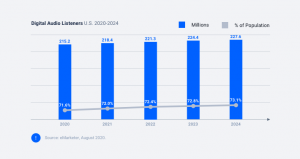
There is no doubt that in 2016, the most successful brands will be omnichannel in nature. This means that they will be selling anywhere the customer is potentially looking, i.e. online marketplaces, their owned and operated website, physical stores, social media and even TV. Yet, as brands look to expand to additional distribution channels to increase product discoverability, it is becoming clear that not all channels produce the same ROI for varying industries.
Consumer buyer journeys differ across channels, as do their expectations. Some channels will be a competition for the lowest price. Others will be more about innovation, design and customer loyalty.
Channel specificity is key to ecommerce sales, and – as the selection of channels highlighted below demonstrates – it’s important to implement a strategy that utilizes the nuances of each.
Channel One: Online Marketplaces (e.g. Amazon, eBay)
- Active Audience: Shoppers here are looking for low prices on traditional products
- Tips: Most often, consumers use channels like Amazon to compare prices across multiple brands to find the best deal. Recently, many shoppers have also started using the channel to more conveniently purchase common household items. This is the area in which, for instance, Jet.com and Amazon compete.
In order to capitalize on this audience, brands should distribute their most popular products to channels like Amazon, specifically those they can offer at a competitive price. Amazon is a smart place to promote less expensive, everyday offers, as shoppers often look to bundle purchases on Amazon in order to reach a free shipping threshold.
Note that to make the most out of Amazon, it is smart to utilize FBA, which helps you to win the buy box and the Prime audience if you are selling items already offered on the marketplace. FBA helps, too, with Amazon’s strict shipping and customer experience policies. You send the items to an Amazon warehouse and they handle the fulfillment. You don’t have to worry, then, about lag times in your own warehouses which could get you kicked out of Amazon’s marketplace.
To drive sales on a site like eBay, you’ll want to distribute products you can afford to price competitively low or completely unique items. Shoppers on eBay are looking for either price-effectiveness or one-of-a-kind items. Keep in mind that eBay has a very active international audience. For brands looking to expand internationally in 2016, eBay may very well be a good place to test the waters.
For all marketplace, complement a browser’s research process with customer testimonials, detailed product information and quality photos. Shoppers benefit from learning more about an item’s specificities and appreciate hearing what other customers find most attractive about the purchase. This can be particularly useful when promoting complicated products with multiple features. This also helps you stand out among the other competition on the highly competitive marketplaces.
Channel Two: Social Media (e.g. Facebook, Twitter, Instagram)
- Active Audience: Shoppers inclined toward impulse purchases
- Tips: Due to the fast pace of social media channels like Twitter and Facebook, shoppers are looking for quick deals that capture their attention. The industry has termed this “impulse shopping” and the goal is to use product photos to create a must-have experience that leads to conversion.
Here, retailers should focus on highlighting products or offers with urgency. To win the sale, brands can stress the limited stock of an item, or leverage the highly-connected nature of social media. For example, if a user sees that two of her Facebook friends bought a product, she will be more likely to engage with and purchase from that brand herself. Ads should feature links that direct consumers straight to the shopping cart to ease the purchase process.
Photos are particularly important for social channels as well. Use either beautiful product photography or lifestyle photos. Browse the Instagram accounts of brands like Loren Hope and Josie Maran for inspiration.
Channel Three: Brick-and-Mortar Storefronts
- Active Audience: Shoppers looking for an in-person experience
- Tips: When heading to an actual storefront, shoppers are looking for an intimate in-person sales experience. Consumers may want to try on a product before purchase, or directly ask sales representative questions. Keep in mind, too, that 75% of shoppers use their mobile phones while in-store.
To meet these needs, a brand’s brick-and-mortar needs to accommodate for online-influenced shopping habits. New Google tools can help to push local foot traffic into your store, and price comparisons or an Instagram-worthy design can help to close the sale and increase brand awareness from an in-store purchase.
An added benefit to a brick-and-mortar location is a salesperson’s ability to introduce a first-time shopper to your ecommerce site. For instance, if an item is not available in store, a sales associate can help a shopper place an order online, pay for cost of shipping and send the order to the store. This way, the shopper leaves satisfied, returns to the store at a later date, and experiences the ease of your online channel firsthand. Home Depot executes a strategy like this extremely well, allowing for in-store pickup to keep prices low without having to lose margins on a free shipping offer.
Channel Four: Television (e.g. Home Shopping Network [HSN], Apple TV, Shark Tank)
- Active Audience: Shoppers interested in a story or those who are early tech adopters
- Tips: Unlike other digital channels, television networks like HSN have to provide consumers with a high degree of entertainment. Not only are consumers hoping to find a deal, but they also anticipate a viewing experience on par with prime-time programming.
When deciding which products to carry on channels like HSN, brands should pick those that most naturally align with a compelling narrative. If a product line was inspired by a CEO’s personal story or developed using interesting ingredients, these features can be woven into the product presentation. In the same way that every great show features a protagonist, brands can center their television spots on a product that tells a compelling story.
If you have multiple compelling stories to share around products or your brand, test them out with blog posts. See which drives the highest traffic and shares.
Also keep watch on Apple’s moves with their new Apple TV integrating commerce into the experience. Shark Tank can also be a high sales driver for your brand, and a potential consideration for those stores with unique products ready for massive growth.
Conclusion
Outside of the five channels listed above, more avenues exist for retailers to connect with shoppers as we head into 2016. With a little effort, industry knowledge and attention to consumer behaviors, any brand can develop a specific sales approach for every channel.
Ecommerce is a growing industry, but as online retailers increasingly expand to multiple channels, it’s important they understand the unique relationship every channel has with the customer.
Digital & Social Articles on Business 2 Community(77)
Report Post







